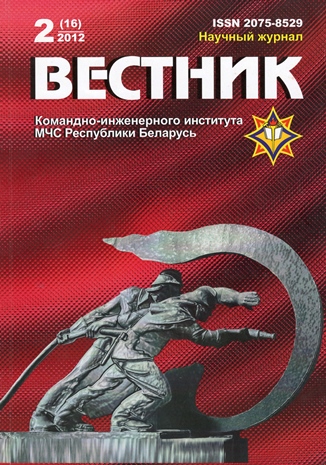Экспериментальное исследование истечения водорода высокого давления в пространство с препятствиями после разрыва оболочки
Abstract
The experimental setup for the simulation of rupture process of the hydrogen pipelines or chambers with pressure up to 13 MPa has been described. The dependences of the intensity of the shock wave formed by outflowing hydrogen and temperature behind the shock waves from the distance to the rupture place. The interaction of the hydrogen jet with obstacles of different configurations is investigated. The possibility of autoignition and deflagration explosion when high-pressure hydrogen outflows in space with a system of focusing and turbulating obstacles has been experimentally proved . The distributions of the visible flame velocity on the radius of the hearth, the maximum values are exceeding 110 m/sec. The factors contributing to the explosive development of the combustion process and its stages are determined.
References
Rigas F., Sklavounos S. Evaluation of hazards associated with hydrogen storage facilities // Int. J. Hydrogen Energy. – 2005. – V. 30. – Pp. 1501–10.
Гельфанд Б.Е., Попов О.Е., Чайванов Б.Б. Водород: параметры горения и взрыва. – М.: ФМЛ, 2008. – 288 с.
Миронов В.Н., Пенязьков О.Г. О динамике импульсного истечения водорода в загроможденное пространство // Горение и взрыв / Под общ. ред. С.М. Фролова. – М.: ТОРУС ПРЕСС, 2010. – Вып. 3. – С. 17–22.
Головичев В.И., Димитров В.И., Солоухин Р.И. Численный анализ моделей воспламенения водорода // ФГВ. – 1973. – Т. 9. – № 1. – С. 95–101.
Гельфанд Б.Е., Сильников М.В., Медведев С.П., Хомик С.В. Термогазодинамика горения и взрыва водорода. – СПб.: Изд-во Политехн. ун-та, 2009. – 584 с.
Published
How to Cite
License
Copyright (c) 2012 Ignatenko D.G., Mironov V.N., Penyaz'kov O.G., Skilond' A.V.
CC «Attribution-NonCommercial» («Атрибуция — Некоммерческое использование») 4.0









